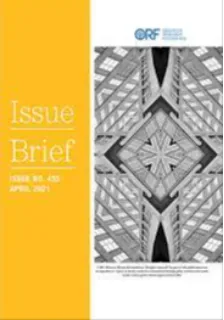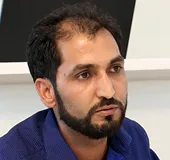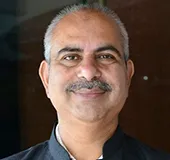The government of Prime Minister Modi has declared its commitment to the introduction of rational and scientific education in madrasas. Efforts have to be made in the areas of planning, legislation and implementation.
The following points summarise this brief’s recommendations for enabling madrasas in India to respond to the needs of the 21st century.
- Standardise the system of madrasa education. The issue of ‘standardisation’ is contentious. In an interview conducted by the authors of this brief with Justice M S A Siddiqui, former chairperson of the National Council for Minority Educational Institutions (NCMEI), he insisted that there was a near consensus[q] on the standardisation of madrasa system and mainstreaming madrasa education to create an inclusive atmosphere, promote social justice, tolerance and economic development. Justice Siddiqui acknowledged that there were procedural and legal hurdles, but he said those could be overcome in a “spirit of consensus and accommodation.” The National Institute of Open Schooling (NIOS) can play a pivotal role in integrating madrasa education and cater to the needs of learners up to pre-degree level. Modern subjects should be integrated into the madrasa system. Begin the standardisation of madrasa education in a specific state as a pilot, before eventually scaling.
- Establish a Central Madrassa Board (CMB). Such an autonomous body can aid in the creation of a standardised curriculum and encourage madrasas to pursue academic studies at par with state boards. Bihar, Bengal, Madhya Pradesh, Chhattisgarh and Uttar Pradesh have state madrasa boards running successfully where madrasa students get certificates equivalent to the Central Board of Secondary Education (CBSE). Advertisements of teaching posts through CMB and even the qualifications for the teachers can be rationalised by this board. The Sachar Commission’s recommendation of modernisation of madrasas has remained merely a slogan. Institutions continue to remain fund-starved to pay for salary of mathematics, science and computer teachers. Unlike in the Christian missionary educational institutions, community funding by Muslims for madrasa education is both erratic and meagre. The CMB should be set up by an act of parliament. The board should not interfere with the religious curriculum of an affiliated madrasa but should stress on the introduction of scientific education. What is required is a balance of science, life and spirituality, vocational training, art of living, developing scientific temperament, secular-democratic outlook, and computer education. Madrasas need to invest in technological applications as well.[46]
- Improve teacher quality. Any system of education is only as good as its teachers. The present conditions of most teachers in madrasas is pitiable: their salaries are irregular, they have no pay-scales or avenues for career advancement. The central government should allocate money for teacher capacity-building through the CMB for different schemes like SPQEM, MOMS, IDMI. Teaching orientation programmes for madrasa teachers are imperative to usher in modernisation. Madrasa teachers need wider exposure to current discourses in public life and geo-political trends, and must learn advanced teaching methods, as well as other skills like counselling.
- Rationalise faculty. The proposed CMB and the state madrasa boards can consider setting up a centralised faculty of social sciences to teach subjects like economics, history, political science, and broader trends in foreign policy. Separate faculties in educational technology, mass communication, computer education and orientation centres should also be set up to have distinctive programmes and a character of their own. Collaborations with various educational centres of excellence should be conducted.
- Help madrasas assimilate their ‘Indian’ identity. The government of India would do well to help madrasas use their institutions in teaching Indian Muslims to assimilate their identity as ‘Indian’ and ‘Muslim’, together—on the basis of a shared sense of history, culture and language. This can be along the lines of Singapore’s deradicalisation programme. After all, the foundations of a nation-state having broad religious, cultural and linguistic diversity should not be built on religious nationalism.
Endnotes
[a] ‘Madrasa’ is the Arabic word for any educational institution. In this brief, ‘madrasa’ refers to any institution of education, especially primary or secondary education imparting Islamic religious education.
[b] These include the World Trade Center bombing in 1993, the African Embassy bombings in 1998, the September 11 attacks, the Bali nightclub bombings in 2002, and the London bombings on July 7, 2005. See: Peter Bergen and Swati Pandey (2006), The Madrassa Scapegoat, The Washington Quarterly 29(2), pp. 117–125.
[c] All madrasas in India except a few like those in the states of Kerala and Maharashtra follow a universal curriculum.
[d] Follower of mystical Islamic belief and practitioner who seeks the divine through love, knowledge and direct personal experience of God.
[e] The Maktaba provided primary education and the Madrasa, higher studies.
[f] A Muslim judge who renders decisions according to the Sharīʿah (Islamic law). In the Indian context, the Qazi’s jurisdiction is confined to civil matters such as marriage, divorce, inheritance etc in the lines of the teachings of Quran and Hadith.
[g] A Muslim title or honorific attached to a scholar or religious leader who has academic knowledge of Quran and Hadith.
[h] Literature used in the modern Arab world to signify “literature distinguished by its broad humanitarian concerns.
[i] Record of the traditions or sayings of the Prophet Muhammad, revered and received as a major source of religious law and moral guidance, second only to the authority of the Qurʾān, the holy book of Islam
[j] Ottoman Empire during it zenith encompassed most of southeastern Europe to the gates of Vienna, including present-day Hungary, the Balkan region, Greece, and parts of Ukraine; portions of the Middle East now occupied by Iraq, Syria, Israel, and Egypt; North Africa as far west as Algeria; and large parts of the Arabian Peninsula.
[k] These historical cities are in present-day Uzbekistan.
[l] There are many religious sects in India. They are Sunnis, Shias, Bohras, Khojas, and Sufis, among them, who run their religious and educational institutions.
[m] On 9 March 2005, the PMO had issued the Notification for constitution of the High Level Committee for preparation of Report on the Social, Economic and Educational Status of the Muslim Community of India. The Terms of Reference are appended to this Report. The Committee was to consolidate, collate and analyse the above information to identify areas of intervention by the Government to address relevant issues relating to the social, economic and educational status of the Muslim community. The committee was headed by Justice Rajindar Sachar and the report was released in November 2006.
[n] Waqf provided a legal way to circumvent the Sharīʿah’s requirement that an individual’s estate be divided among many heirs. Through a waqf, an individual could endow an institution or group with all or part of his estate, in perpetuity, before his death. In India, state-run waqf boards have been set up to deal with waqf-related issues and administer them.
[o] An obligatory tax required of Muslims, one of the five Pillars of Islam. The 2.5 percent zakat is levied on various categories of property—money, gold and movable goods payable each year after one year’s possession.
[p] Voluntary almsgiving, which, like zakat, is intended for the needy.
[q] Jamiat-e-Ulema was the only and notable opposition.
[1] Thomas H. Kean et al, “The 9/11 Commission Report: The Final Report of the National Commission on Terrorist Attacks Upon the United States”, (U.S Executive Agency Publications, W. W. Norton, New York, 2004),
[2] Kean et al, “The 9/11 Commission Report: The Final Report of the National Commission on Terrorist Attacks Upon the United States”
[3] Donald Rumsfeld, “interview by Charlie Rose”, Charlie Rose Show, PBS, August 20, 2005.
[4] Mohd Izzat Amsyar Mohd Arif et al, “Madrasah Education System And Terrorism: Reality And Misconception”, International Journal of Educational Best Practices, Vol. 1, Number 1, April 2017.
[5] Salam, Zia Us and M. Aslam Parvaiz, Madrasas in the Age of Islamophobia, (New Delhi; Sage Publications, 2019)
[6] Salam and Parvaiz, Madrasas in the Age of Islamophobia
[7]Moin Qazi, “India’s Emerging Modern Madrasas”, The Diplomat, March 16, 2017; Hemant Upadhya, Rajat Rai, “This madrasa in Agra has Hindu students, teaches english, mathematics, science”, India Today, November 27, 2017,
[8] Moin Qazi, “India’s Emerging Modern Madrasas”, The Diplomat, March 16, 2017,
[9] Ahona Sengupta, “Want Muslims to Have Quran in One Hand and Computer in Other: PM Narendra Modi”, News 18, March 01, 2018,
[10] Abhishek Saha, “Assam’s madrasas to become regular schools”, The Indian Express, December 15, 2020,
[11] John L. Eposite, The Oxford Encyclopedia of the Islamic World, (New York, Vol. I),
[12] Seyyed Hossein Nasr, Traditional Islam in the Modern World, (London, 1987); J. Pederson, “Some Aspects of the history of Madrassa”, Encyclopedic survey of Islamic Culture Vol. 3, (New Delhi, 1997),
[13] Shaw, Stanford J. and Ezel K., “History of the Ottoman empire and modern Turkey”, (Cambridge: Cambridge University Press 1976), Marshall G. S. The venture of Islam; conscience and history in a world civilization, (University of Chicago Press, 1974)
[14] Richard Fry, Bukhara, the medieval achievement, (University of Oklahoma Press, 1966),
[15] Sarfraz Khan, ‘The development of Muslim reformist (Jadid) political thought in the emirate of Bukhara, 1870-1924, with particular reference to the writings of Ahmad Donish and Abdal Rauf Fitrat,‘ PhD Thesis, 1998, University of London.
[16] William Gervase Clarence Smith, Science and technology in early modern Islam, c.1450-c.1850,
[17] Fry, Bukhara, the medieval achievement
[18] Science and technology in Medieval Islam (ox.ac.uk)
[19] Avicenna . The Catholic Encyclopedia, vol. II. (Robert Appleton Company: New York, 1907).
[20] Salam and Parvaiz, Madrasas in the Age of Islamophobia; AHM Haque, , “Status of Islamic Studies and Madrasa Education in India: An Overview.” An Online Journal of Humanities and Social Sciences 1 (4), 2013.
[21] Khalid Saifullah Rahmani, introduction to Dini Madaris Aur ‘Asr-i-Hazir (Religious schools and the modern age), by Muhammad Rizwan-ul Qasmi (Hyderabad: Markaz Da’wat-o-Tahqiqat, 1994)
[22] . Francis Robinson, The ulema of Firangi Mahal and Islamic Culture in South Asia, (Delhi: Permanent Black, 2001).
[23] Ansari, M A. 2016. “Modern Education in Madrasas: A Perspective Study of Dar Al-Uloom Deoband.” Asia Pacific Journal of Research 1 (44)
[24] Salam and Parvaiz, Madrasas in the Age of Islamophobia
[25] Upadhyay, R. 2003. “Madrasa Education in India- Is it to Sustain Attitude among Muslims.” South Asia Analysis Group, Paper No. 370
[26] Victor Mallet, “Madrasas: behind closed doors”, Financial Times, October 30,2015,
[27] Ghazala Wahab, Born a Muslim: Some Truths About Islam in India, (Aleph Book Company, 2021)
[28] Ministry of Education, Scheme for Providing Quality Education in Madrasas (SPQEM), department of School Education and Literacey,
[29] Ministry of Education, Scheme for Providing Quality Education in Madrasas (SPQEM), department of School Education and Literacy,
[30] Justice M S A Siddiqui, Telephonic Interview,
[31] Justice M S A Siddiqui, Telephonic Interview,
[32] Inside Singapore’s oldest Islamic religious school, where they put faith in Apple iPads, Digital News – AsiaOne
[33] Navtan Kumar, “Nearly 20% of madrasas are unrecognised”, Sunday Guardian Live, February 15, 2020,
[34] Vasudha Venugopal, “Muslim religious body to form a committee to draft a roadmap to modernise Madrasas”, The Economic Times, September 16, 2019,
[35] Avinash Kumar Sing et al., “Evaluation of the Implementation of the Scheme for Providing Quality Education in Madrasas (SPQEM)”, National Institute of Educational Planning and Administration, 2018,
[36] Sachar Committee Report, Social, Economic and Educational Status of the Muslim Community of India, MINISTRY OF MINORITY AFFAIRS, November 2006.
[37] Committee Report, Social, Economic and Educational Status of the Muslim Community of India
[38] Vasudha Venugopal, “Muslim religious body to form a committee to draft a roadmap to modernise Madrasas”, The Economic Times, September 16, 2019,
[39] Salam and Parvaiz, Madrasas in the Age of Islamophobia
[40]Kumar Sing et al., “Evaluation of the Implementation of the Scheme for Providing Quality Education in Madrasas (SPQEM)”,
[41]Kumar Sing et al., “Evaluation of the Implementation of the Scheme for Providing Quality Education in Madrasas (SPQEM)”,
[42] Salam and Parvaiz, Madrasas in the Age of Islamophobia
[43] Venugopal, “Muslim religious body to form a committee to draft a roadmap to modernise Madrasas”,
[44] Venugopal, “Muslim religious body to form a committee to draft a roadmap to modernise Madrasas”,
[45] “Kidwai Report of The Madrasah Education Committee”, West Bengal 2002,
[46] Inside Singapore’s oldest Islamic religious school, where they put faith in Apple iPads, Digital News – AsiaOne

 PDF Download
PDF Download



 PREV
PREV



